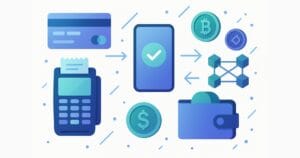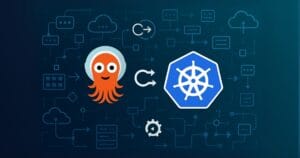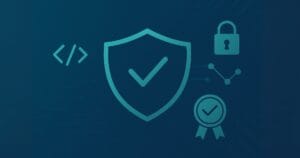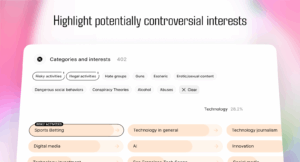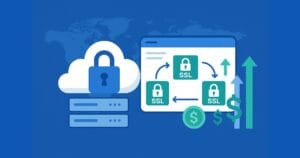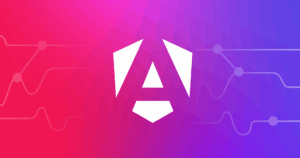Copyscape – Website Plagiarism Search
Key Takeaways
- Copyscape is a free, anti-plagiarism tool that can help identify instances of content theft by analyzing entire web pages and detecting matches with other online content.
- Unlike other search tools, Copyscape doesn’t require keyword phrases for its search, making it a more efficient and effective tool in locating plagiarized content.
- Copyscape also provides practical advice on handling plagiarism cases, including providing whois information, which can be critical in resolving such issues.
- The service also offers a paid version, CopySentry, which actively monitors the web for copies of your content and sends reports via email, providing a proactive approach to content protection.
Chris recently raised the difficult issue of content theft and how to tackle it.
We’ve certainly had our share of rip-off artistes and generally we’ve found it to be a two-tiered problem.
- Becoming aware your content has been ripped in the first place
- Getting something done about it
Finding your ripped content fast is paramount. If Google or Yahoo spiders stumble across the ripped content first, the damage is done. If you’re not identified as the first known occurence of that content it may difficult to recover trust.
Common sense tells you Google is your first port of call to locate your ripped-off content, but one great tool not many people seem to know about is Copyscape — a free, purpose-built, anti-plagiarism search tool. Just give Copyscape the URL of your content and it will do the grunt work and report back to you.

Probably the coolest thing about Copyscape is it doesn’t require you to enter ‘keyword phrases’ (headings, paragraphs, etc) from your content in the hope of matching the rip-off, as Google would. Copyscape analyses entire pages similtaneously and can seemingly easily detect matched pages, passages, paragraphs and even matched sentences. Some of the copies I’ve tracked down have been deeply obscured with hidden CSS, but Copyscape wasn’t fooled.
Ok , so you’ve located rip-offs. What now?
It’s easy to feel a bit forlorn and helpless, but it’s generally not as hopeless as you might think. Copyscape provides whois info as well as practical advice in responding to plagiarism.
It’s useful to remember that IP thieves very often rely on other larger, more reputable organisations (their ISP, Adsense, Commision Junction) to operate, so they usually don’t want to risk their server/revenue in a fight. If you’re courteous but very clear they’ll often quickly backdown.
It’s also worthwhile looking at Copyscape’s commercial service called CopySentry which automatically monitors the web for rogue copies of your content and then reports the results back to you via email. I can’t vouch directly for this paid service yet , but if your content is one of your key assets, this seems like a pretty cost effective way to protect it.
Either way, the free service is very useful for anyone running a content site.
Frequently Asked Questions (FAQs) about Copyscape
How does Copyscape work in detecting plagiarism?
Copyscape operates by using advanced algorithms and web crawling technology to scan the entire internet for duplicate content. When you input a URL or a piece of text into the search bar, Copyscape will compare it against billions of pages on the internet. If it finds any matches, it will highlight the matching text and provide a link to the source. This allows you to see if anyone has copied your content without permission.
Is Copyscape free to use?
Copyscape offers both free and premium versions. The free version allows you to enter a URL and it will check for copies of that page on the web. However, the premium version offers more comprehensive features, including the ability to check for copies of specific pieces of text, batch search, and offline content checking.
How accurate is Copyscape in detecting plagiarism?
Copyscape is considered one of the most accurate plagiarism detection tools available. It uses sophisticated technology to scan the entire web, including both indexed and non-indexed content. However, like any tool, it may not catch every instance of plagiarism, especially if the copied content has been significantly altered or translated into another language.
Can Copyscape detect paraphrased content?
While Copyscape is highly effective at detecting exact matches, it may not always catch paraphrased content. Paraphrasing involves changing the wording of a text while maintaining the original meaning, which can make it difficult for plagiarism detection tools to identify. However, Copyscape’s advanced algorithms can often detect instances of near-identical paraphrasing.
How can I use Copyscape to protect my website content?
Copyscape offers a service called Copysentry that automatically monitors the web for copies of your pages. If it finds a match, it will send you an alert via email. This allows you to take immediate action to protect your content. You can also use the Copyscape banners on your website to deter potential plagiarists.
What should I do if Copyscape finds a copy of my content?
If Copyscape finds a copy of your content, you can contact the owner of the website and request that the content be removed. If they refuse or do not respond, you can file a DMCA (Digital Millennium Copyright Act) complaint to have the content removed.
Can I use Copyscape to check my own work for plagiarism?
Yes, Copyscape can be used to check your own work for unintentional plagiarism. This can be particularly useful for writers, students, and academics who want to ensure their work is original before publishing or submitting it.
Does Copyscape store the content I check?
No, Copyscape does not store the content you check. It only uses the content to perform the plagiarism check and then discards it. This ensures the privacy and security of your content.
Can Copyscape check content in different languages?
Yes, Copyscape can check content in different languages. However, its ability to detect plagiarism may vary depending on the language and the complexity of the text.
How does Copyscape compare to other plagiarism detection tools?
Copyscape is widely regarded as one of the best plagiarism detection tools due to its comprehensive web coverage, accuracy, and ease of use. While there are other tools available, many of them do not offer the same level of coverage or accuracy as Copyscape.
Alex has been doing cruel and unusual things to CSS since 2001. He is the lead front-end design and dev for SitePoint and one-time SitePoint's Design and UX editor with over 150+ newsletter written. Co-author of The Principles of Beautiful Web Design. Now Alex is involved in the planning, development, production, and marketing of a huge range of printed and online products and references. He has designed over 60+ of SitePoint's book covers.




